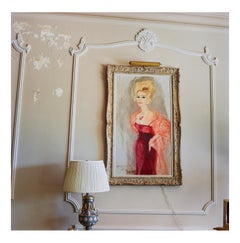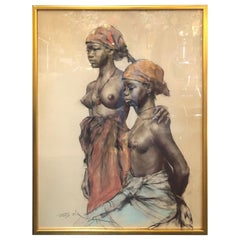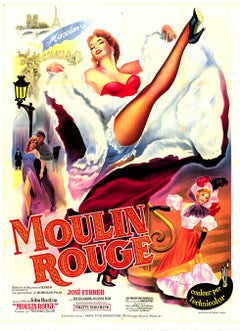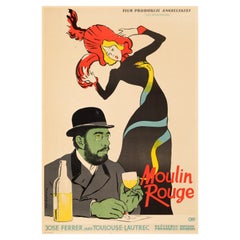Zsa Zsa Gabor
Early 2000s Contemporary Still-life Photography
Archival Pigment
Mid-20th Century American Drawings
Paper
2010s Pop Art Figurative Prints
Color, Archival Pigment
1950s Art Nouveau Portrait Prints
Lithograph
2010s Modern Figurative Prints
Archival Pigment
21st Century and Contemporary Contemporary Figurative Paintings
Canvas, Oil
21st Century and Contemporary Contemporary Figurative Paintings
Canvas, Oil
21st Century and Contemporary Contemporary Figurative Paintings
Canvas, Oil
Vintage 1950s Polish Mid-Century Modern Posters
Paper, Linen
1980s American Evening Gowns
Late 20th Century American Modern Animal Sculptures
Terracotta
21st Century and Contemporary Books
Paper
1990s American Cocktail Dresses
1960s American Negligees
Late 20th Century Modern Portrait Paintings
Canvas, Oil
1970s Contemporary Landscape Drawings and Watercolors
Watercolor
1970s Contemporary Still-life Paintings
Oil
1970s Contemporary Still-life Drawings and Watercolors
Watercolor
Late 20th Century Nude Paintings
Paper, Mixed Media
Late 20th Century Nude Paintings
Paper, Watercolor
Late 20th Century Nude Paintings
Paper, Mixed Media
Late 20th Century Nude Paintings
Paper, Mixed Media
Late 20th Century Nude Paintings
Paper, Mixed Media
Late 20th Century Nude Paintings
Paper, Mixed Media
Late 20th Century Nude Paintings
Paper, Acrylic, Graphite
Late 20th Century Nude Paintings
Mixed Media
Late 20th Century Nude Paintings
Paper, Charcoal
Late 20th Century Nude Paintings
Paper, Mixed Media
1980s Nude Paintings
Canvas, Acrylic
Late 20th Century Nude Paintings
Paper, Acrylic, Graphite
Late 20th Century Figurative Paintings
Paper, Acrylic
Late 20th Century Nude Paintings
Paper, Watercolor, Graphite
Late 20th Century Nude Paintings
Paper, Acrylic, Graphite
Late 20th Century Nude Paintings
Paper, Mixed Media
Late 20th Century Nude Paintings
Paper, Watercolor, Graphite
Late 20th Century Nude Paintings
Paper, Watercolor, Graphite
Late 20th Century Nude Paintings
Paper, Mixed Media
Late 20th Century Nude Paintings
Paper, Watercolor
Late 20th Century Nude Paintings
Paper, Mixed Media
Late 20th Century Nude Paintings
Paper, Mixed Media
Late 20th Century Nude Paintings
Paper, Mixed Media
Late 20th Century Nude Paintings
Paper, Watercolor, Graphite
Late 20th Century Nude Paintings
Paper, Mixed Media
Late 20th Century Nude Paintings
Paper, Mixed Media
Late 20th Century Figurative Paintings
Paper, Mixed Media
Late 20th Century Nude Paintings
Paper, Acrylic, Graphite
Late 20th Century Nude Paintings
Paper, Charcoal, Watercolor
Late 20th Century Mixed Media
Paper, Mixed Media
Late 20th Century Nude Paintings
Paper, Graphite
Late 20th Century Mixed Media
Paper, Mixed Media
Early 2000s Portrait Paintings
Canvas, Acrylic
1980s American Skirt Suits
1950s Contemporary Black and White Photography
Archival Ink, Archival Paper, Archival Pigment
1950s Black and White Photography
Archival Ink, Archival Paper, C Print, Archival Pigment
1950s Black and White Photography
Archival Ink, Archival Paper, C Print, Archival Pigment
1950s Black and White Photography
Archival Ink, Archival Paper, C Print, Archival Pigment
1950s Black and White Photography
Archival Ink, Archival Paper, C Print, Archival Pigment
- 1








